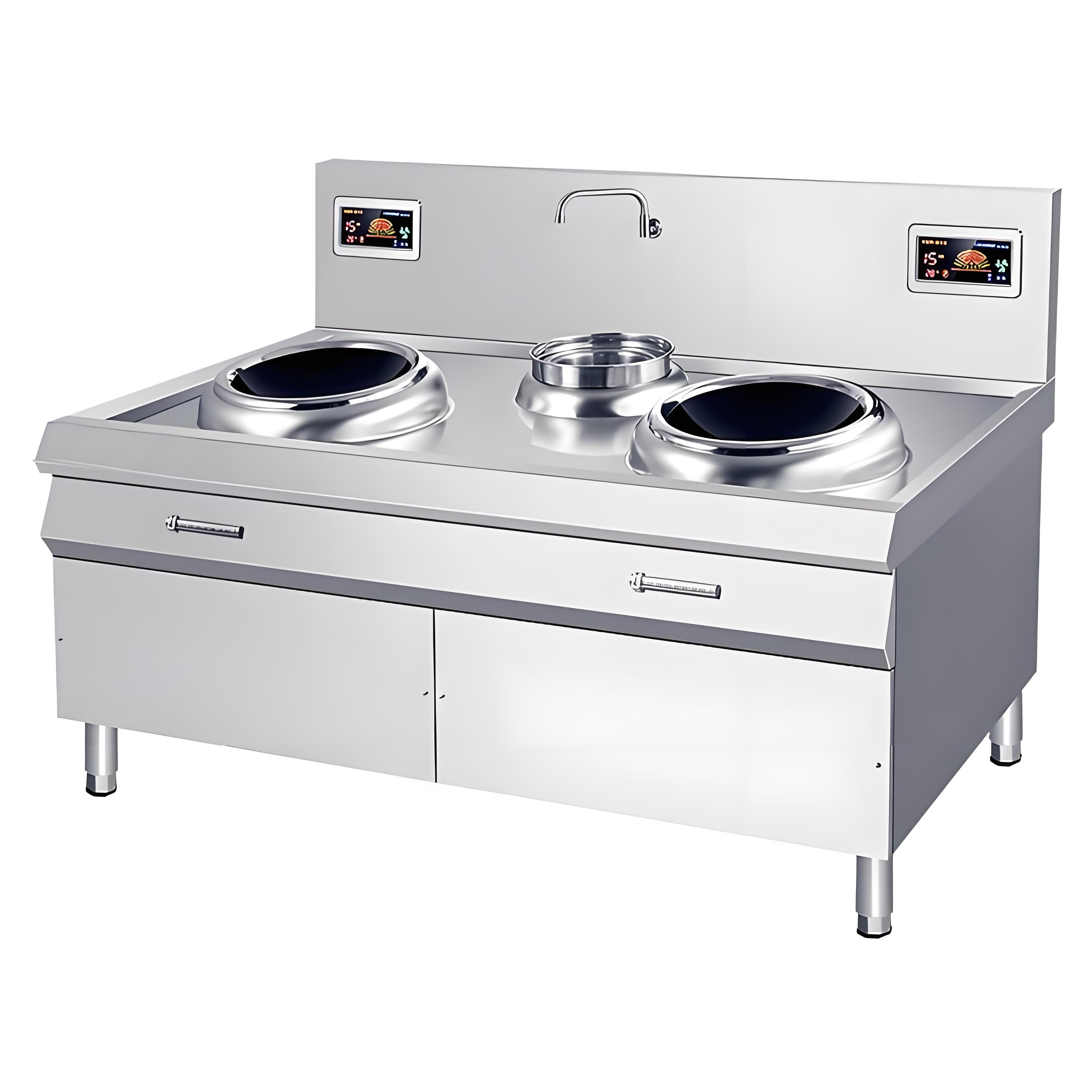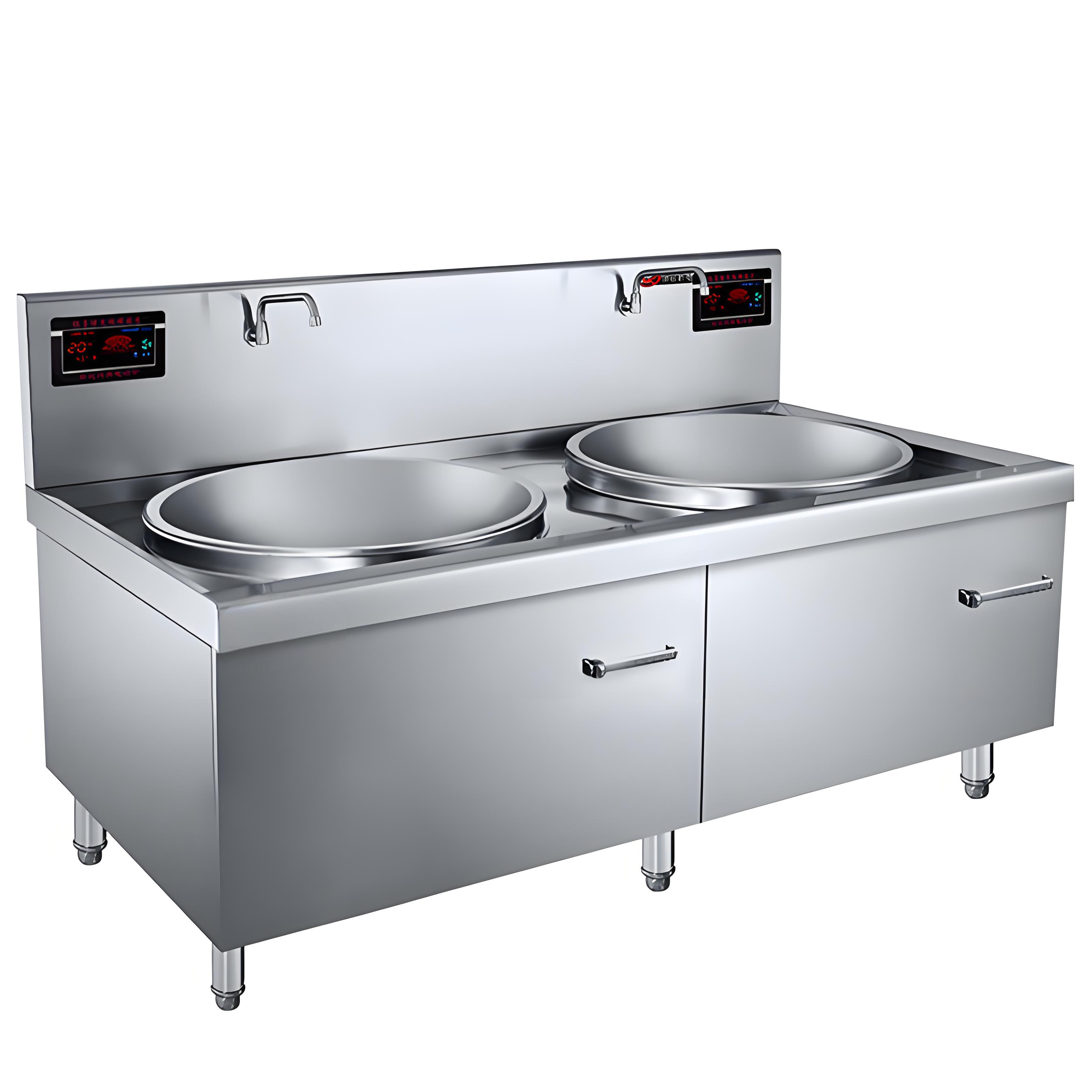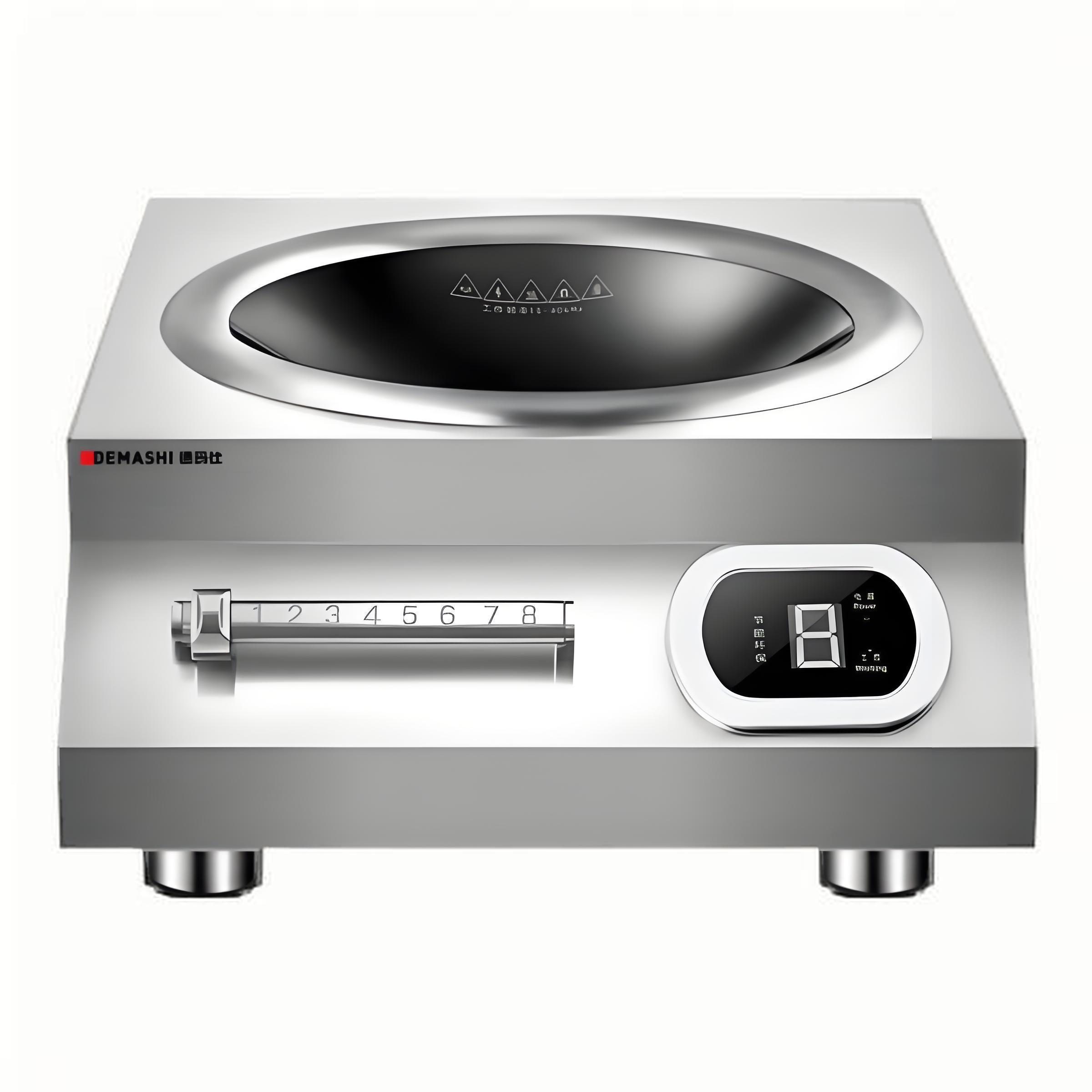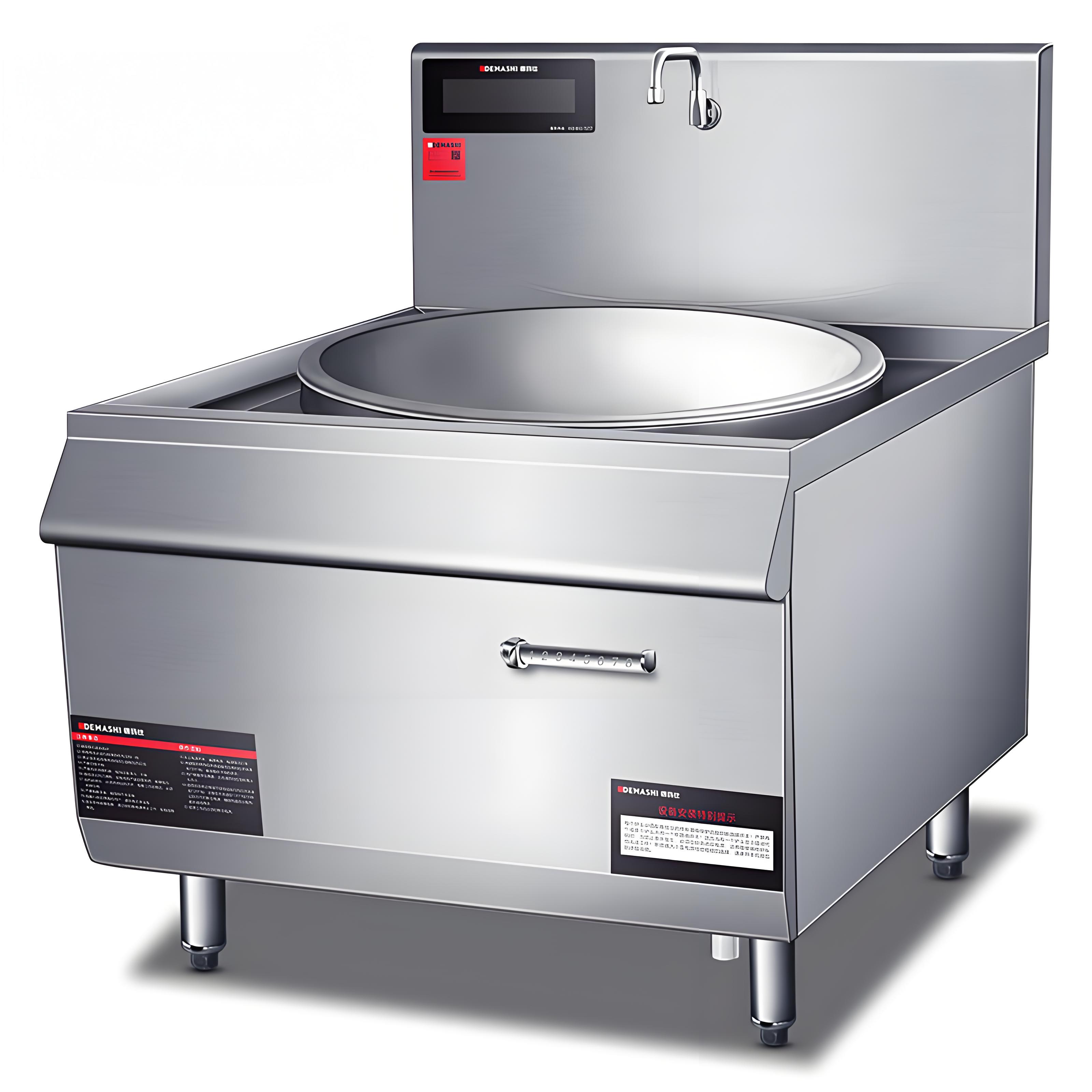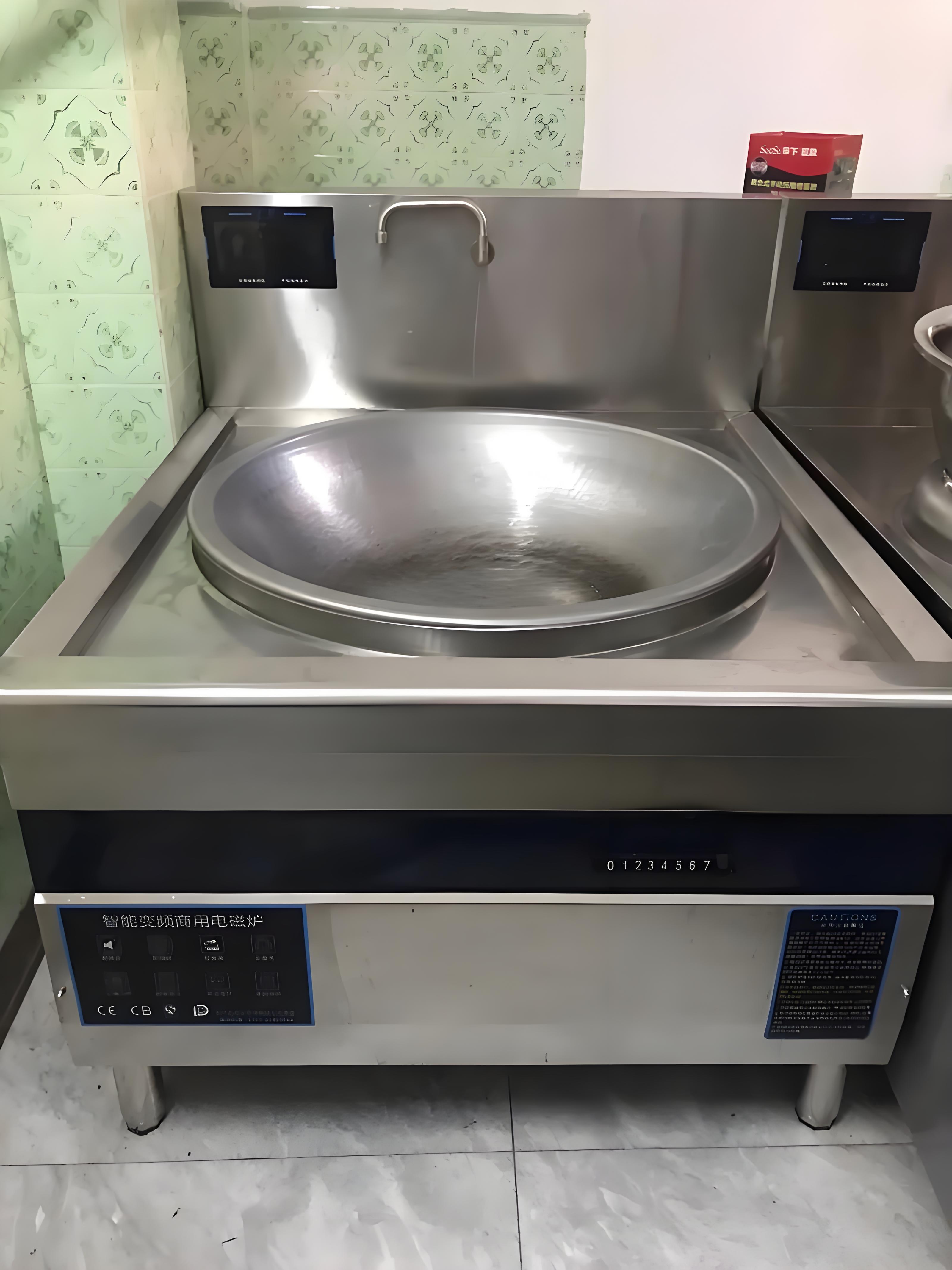As someone who has been deeply involved in the commercial kitchen equipment industry for years, I’ve encountered countless questions about the operation and maintenance of commercial induction cookers. One of the most frequent concerns I hear is, “Why is the bottom plate of my commercial induction cooker heating up? Is this a sign of a malfunction?”
This is a valid question, especially since induction cookers are known for their efficiency and safety. Unlike traditional gas or electric stoves, induction cookers heat pots and pans directly through electromagnetic fields, leaving the cooking surface itself relatively cool. So, when users notice the bottom plate (the area around the cooking zone) heating up, it’s natural to worry.
In this article, I’ll break down the reasons behind bottom plate heating in commercial induction cookers, whether it’s a cause for concern, and how to address it. I’ll also share some practical tips to help you maintain your equipment and extend its lifespan.
Understanding How Commercial Induction Cookers Work
Before diving into the issue of bottom plate heating, let’s quickly recap how commercial induction cookers operate.
Induction Technology: Induction cookers use electromagnetic fields to heat ferrous (iron-based) cookware directly. The cooktop itself doesn’t generate heat; instead, the heat is produced in the pot or pan.
Cool Surface: Under normal circumstances, the glass-ceramic surface of an induction cooker remains cool to the touch, except for the area directly under the cookware.
Efficiency: Induction cookers are highly efficient because they transfer heat directly to the cookware, minimizing energy waste.
Given this, it’s unusual for the bottom plate (the area around the cooking zone) to heat up significantly. However, there are several reasons why this might happen, and not all of them indicate a malfunction.
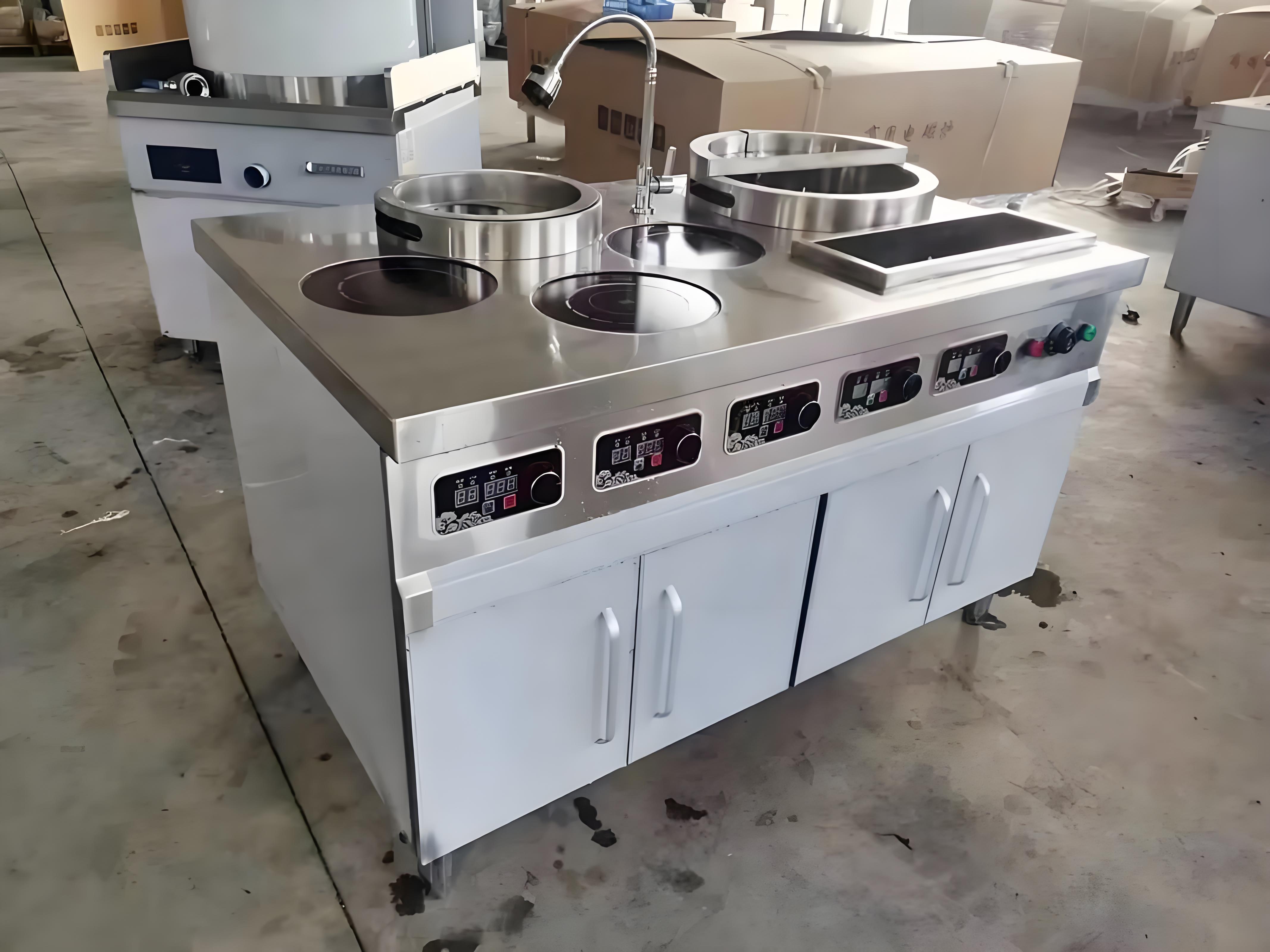
Common Causes of Bottom Plate Heating
Here are the most common reasons why the bottom plate of a commercial induction cooker might heat up:
1. Normal Heat Dissipation
Explanation: Even though induction cookers are efficient, some heat is still generated by the electronics inside the unit. This heat needs to be dissipated to prevent overheating.
Symptoms: The bottom plate might feel warm to the touch, especially near the ventilation slots or around the edges.
Is This Normal?: Yes, this is a normal part of the cooker’s operation. As long as the temperature doesn’t exceed safe limits (more on this later), there’s no cause for concern.
2. Poor Ventilation
Explanation: Commercial induction cookers require proper ventilation to dissipate heat. If the cooker is placed in a confined space or blocked by other equipment, heat can build up around the bottom plate.
Symptoms: The bottom plate feels hotter than usual, and the cooker might shut down unexpectedly due to overheating.
Solution: Ensure the cooker has at least 10-15 cm of clearance on all sides, especially near the ventilation slots. Avoid placing it under cabinets or near walls that could block airflow.
3. Faulty Cooling Fan
Explanation: Most commercial induction cookers are equipped with cooling fans to regulate internal temperatures. If the fan malfunctions or gets clogged with dust, heat can accumulate, causing the bottom plate to heat up.
Symptoms: The bottom plate is hot, and you might hear unusual noises from the fan (or no noise at all if the fan has stopped working).
Solution: Clean the fan and ventilation slots regularly. If the fan is damaged, contact a professional technician to replace it.
4. Using Non-Compatible Cookware
Explanation: Induction cookers require ferrous cookware to work properly. If you’re using non-compatible pots or pans (e.g., aluminum, copper, or glass), the cooker might struggle to heat the cookware efficiently, causing excess heat to build up around the bottom plate.
Symptoms: The bottom plate heats up, and the cookware doesn’t get hot enough.
Solution: Use only induction-compatible cookware. You can test this by placing a magnet on the bottom of your pot or pan—if it sticks, it’s compatible.
5. Overloading the Cooker
Explanation: Commercial induction cookers are designed to handle high power outputs, but pushing them beyond their limits can cause overheating. For example, using multiple high-power cooking zones simultaneously for extended periods might strain the cooker’s cooling system.
Symptoms: The bottom plate feels hot, and the cooker might display an error code or shut down.
Solution: Avoid overloading the cooker. If you need to use multiple zones, stagger the cooking times or use lower power settings.
6. Internal Component Failure
Explanation: In rare cases, bottom plate heating could be a sign of a more serious issue, such as a faulty circuit board, damaged insulation, or a malfunctioning power module.
Symptoms: The bottom plate is extremely hot, and the cooker might exhibit other signs of malfunction (e.g., flickering display, unusual noises, or error codes).
Solution: Turn off the cooker immediately and contact a qualified technician. Do not attempt to repair it yourself, as this could void the warranty or cause further damage.
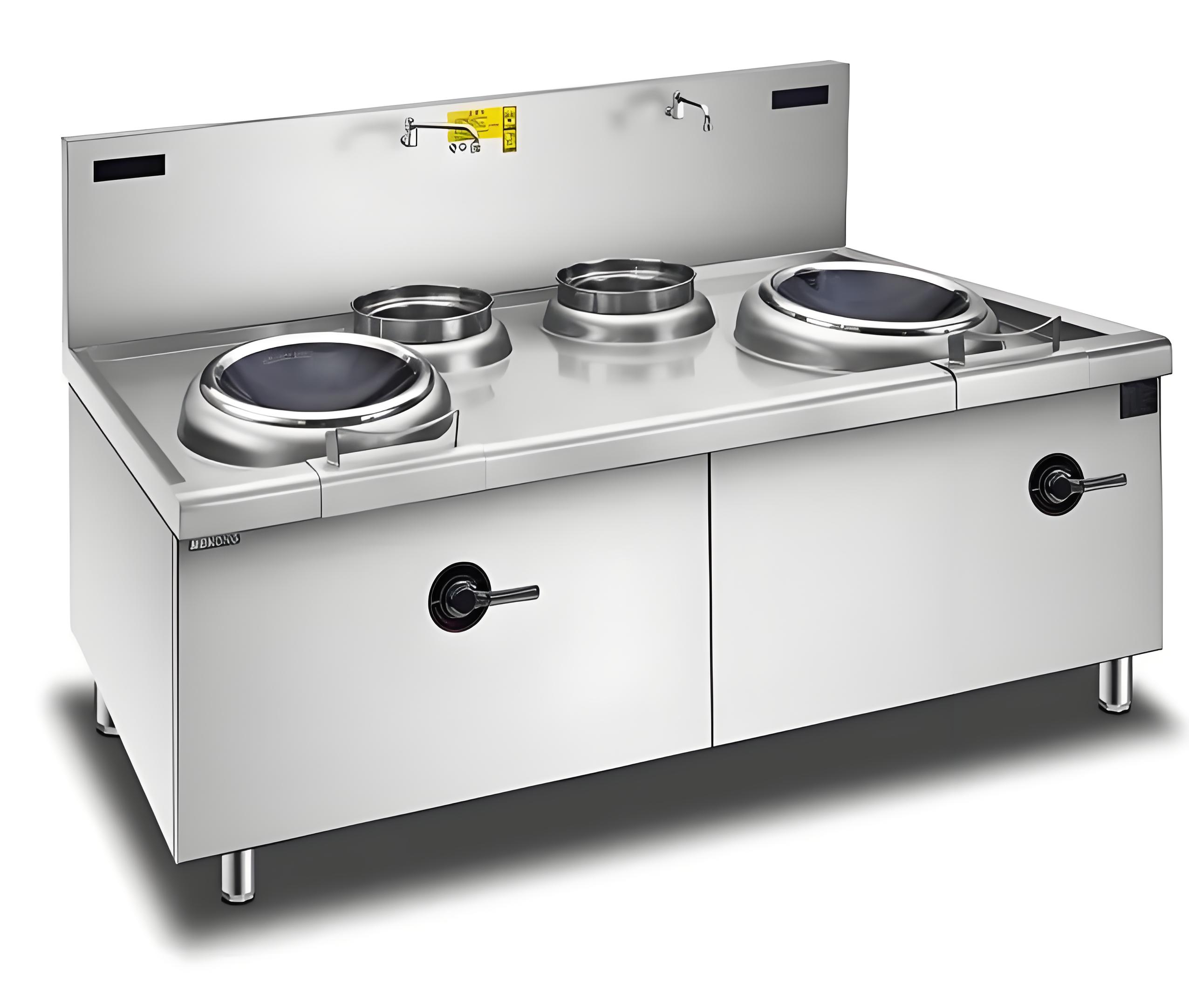
How to Determine if the Heating Is Normal or a Problem
Not all bottom plate heating is cause for alarm. Here’s how to tell the difference:
Check the Temperature:
Use a non-contact infrared thermometer to measure the temperature of the bottom plate.
If the temperature is below 60°C (140°F), it’s likely normal heat dissipation.
If the temperature exceeds 80°C (176°F), there might be an issue.
Look for Error Codes:
Most commercial induction cookers have built-in diagnostics. If the cooker displays an error code related to overheating, refer to the user manual or contact the manufacturer.
Monitor Performance:
If the cooker is heating up but still cooking food normally, it might be a minor issue.
If the cooker is shutting down, flickering, or not heating food properly, it’s likely a more serious problem.
Table: Common Causes and Solutions for Bottom Plate Heating
| Cause | Symptoms | Solution |
|---|---|---|
| Normal heat dissipation | Bottom plate feels warm, especially near ventilation slots. | No action needed; this is normal. |
| Poor ventilation | Bottom plate is hot, and the cooker might shut down due to overheating. | Ensure 10-15 cm clearance around the cooker; avoid blocking ventilation slots. |
| Faulty cooling fan | Bottom plate is hot, and the fan is noisy or not working. | Clean the fan and ventilation slots; replace the fan if damaged. |
| Using non-compatible cookware | Bottom plate heats up, and the cookware doesn’t get hot enough. | Use only induction-compatible cookware (test with a magnet). |
| Overloading the cooker | Bottom plate is hot, and the cooker might display an error code or shut down. | Avoid using multiple high-power zones simultaneously; stagger cooking times. |
| Internal component failure | Bottom plate is extremely hot, and the cooker exhibits other malfunctions. | Turn off the cooker and contact a qualified technician. |
Preventive Maintenance Tips
To minimize the risk of bottom plate heating and extend the lifespan of your commercial induction cooker, follow these tips:
Clean Regularly:
Wipe down the cooking surface after each use to prevent food residue from building up.
Clean the ventilation slots and cooling fan monthly to ensure proper airflow.
Use the Right Cookware:
Always use induction-compatible pots and pans. Avoid lightweight or warped cookware, as it can cause uneven heating.
Avoid Overloading:
Follow the manufacturer’s guidelines for power usage. Don’t exceed the recommended wattage or use multiple zones at full power for extended periods.
Schedule Professional Inspections:
Have a qualified technician inspect your cooker annually to check for worn-out components, loose connections, or other potential issues.
Monitor Performance:
Pay attention to any changes in how the cooker operates. If you notice unusual noises, error codes, or reduced efficiency, address the issue promptly.
When to Seek Professional Help
While some bottom plate heating is normal, certain situations require professional attention. Here’s when to call a technician:
The bottom plate is extremely hot (above 80°C/176°F).
The cooker shuts down unexpectedly or displays error codes related to overheating.
You hear unusual noises (e.g., grinding, rattling) coming from the cooker.
The cooling fan doesn’t work or makes strange sounds.
The cooker doesn’t heat food properly despite being turned on.
Attempting to repair a commercial induction cooker yourself can be dangerous and may void the warranty. Always rely on a qualified technician for repairs.
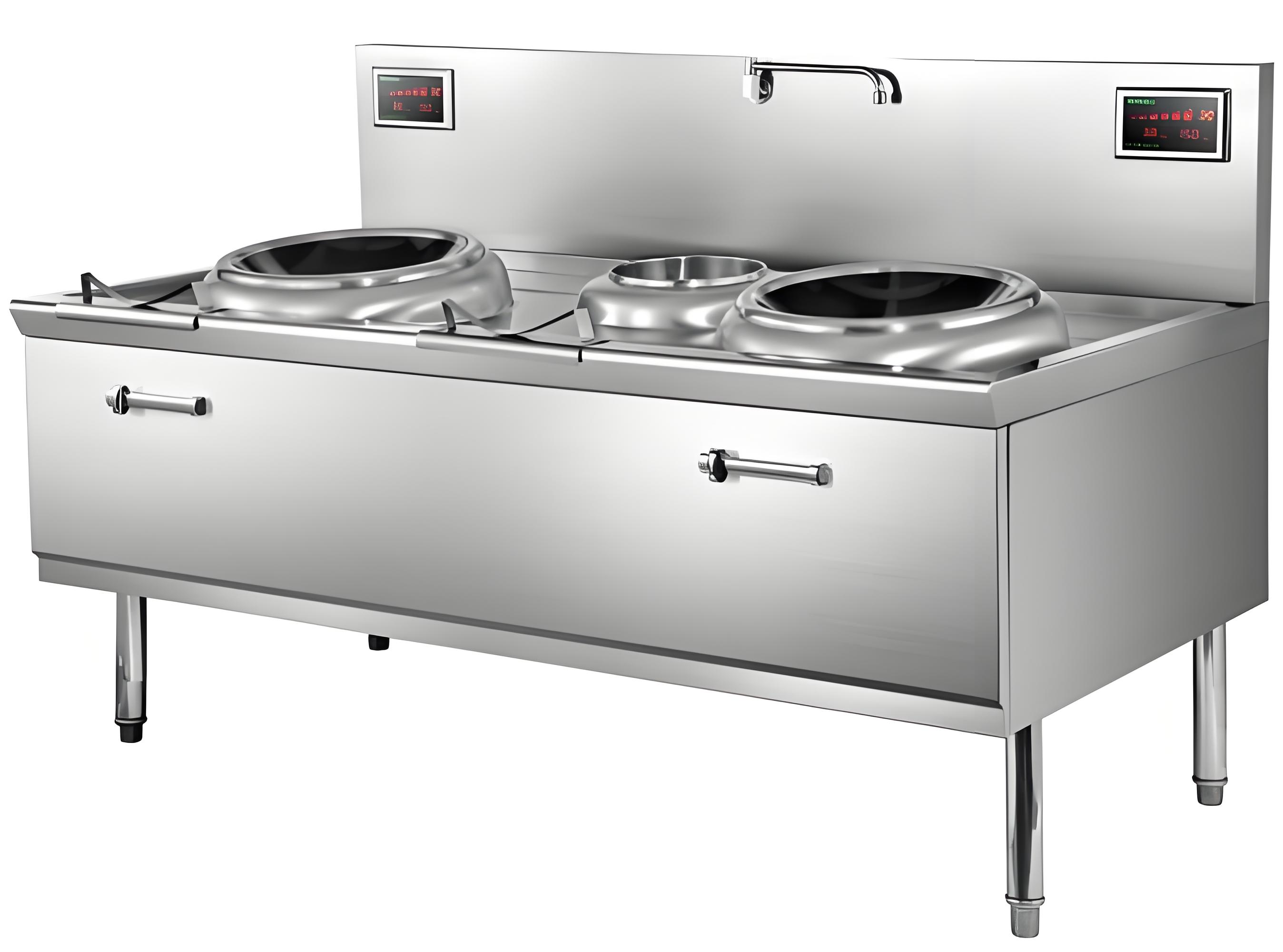
Final Thoughts
Bottom plate heating in commercial induction cookers isn’t always a sign of a malfunction. In many cases, it’s simply a result of normal heat dissipation or minor issues like poor ventilation or incompatible cookware. However, if the heating is excessive or accompanied by other symptoms, it’s important to investigate further.
By following the tips in this article, you can keep your commercial induction cooker running smoothly and avoid costly repairs. Remember, regular maintenance and proper usage are key to extending the lifespan of your equipment.
If you’re still unsure whether the bottom plate heating in your cooker is normal or a cause for concern, don’t hesitate to reach out to the manufacturer or a qualified technician for advice.
Related Questions
Q: Can I use aluminum pots on a commercial induction cooker?
A: No, aluminum is not ferrous and won’t work with induction cookers. Use only induction-compatible cookware (e.g., stainless steel, cast iron).
Q: How often should I clean the ventilation slots on my induction cooker?
A: Clean the ventilation slots monthly to prevent dust buildup and ensure proper airflow.
Q: Is it normal for the bottom plate to heat up when using multiple cooking zones?
A: Some heat dissipation is normal, but if the bottom plate becomes excessively hot, you may be overloading the cooker. Try using fewer zones or lower power settings.
Q: Can I repair a faulty cooling fan myself?
A: It’s not recommended. Cooling fans are integrated into the cooker’s electronics, and improper repairs can be dangerous. Contact a qualified technician.
Q: How long do commercial induction cookers typically last?
A: With proper maintenance, commercial induction cookers can last 8-12 years or more.
I hope this article has helped clarify the issue of bottom plate heating in commercial induction cookers. If you have any other questions or concerns, feel free to leave a comment below!
